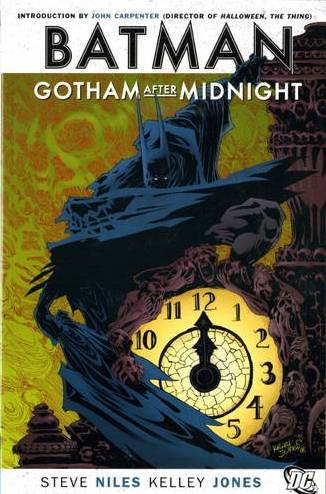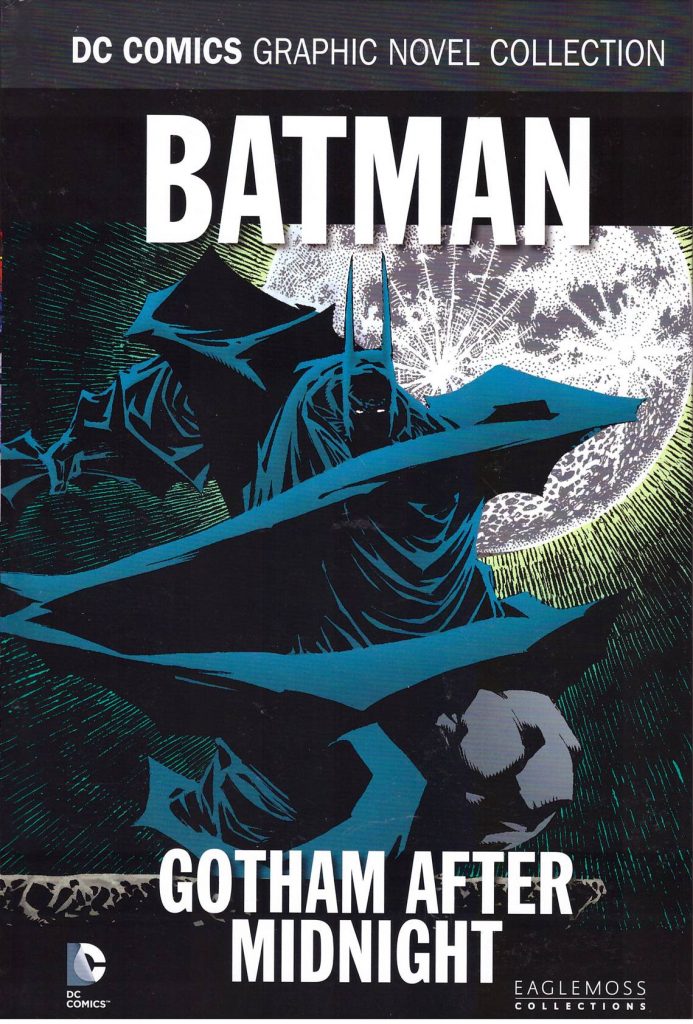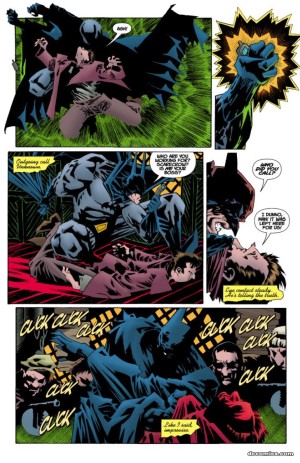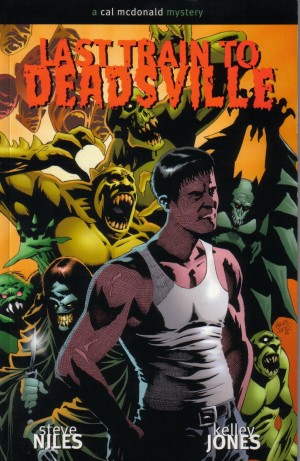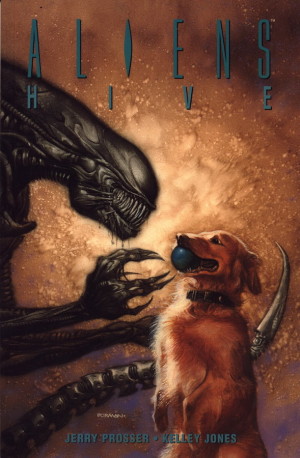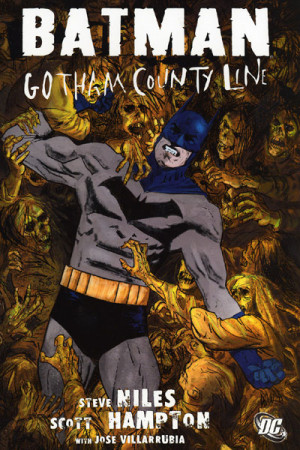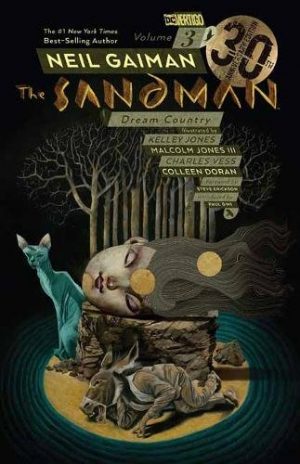Review by Ian Keogh
Kelley Jones cut his artistic teeth working on Batman when his already stylised interpretation modified from being strongly influenced by Berni Wrightson to an individual synthesis. The literal minded can point out that as drawn by Jones with massive cloak and exaggerated stiff ears, Batman as we know him would be unable to function effectively, but comics prioritise the visual, and Jones’ Batman looks great, shrouded in shadow and enveloped by his cloak. There are a few glitches with scale, particularly with an abnormally small Batmobile (designed like a 1950s Forumla One racing car) parked in a tiffany style Batcave in the opening chapter, but overall it’s arresting.
Jones’ interpretations of Batman’s various vehicles and Gotham’s major villains are equally stylish, yet they’re all too often seemingly different people from panel to panel. The Joker is the worst example, as if Jones has decided to depict every single interpretation of the character within the same comic. It’s confusing and distracting.
From very early in Steve Niles’ plot Batman determines that something’s wrong in Gotham. His instinct tells him the mood’s just not right, and this is confirmed by assorted villains behaving out of character. Clayface is sent on murderous rampages, and the Scarecrow is occupied with trivial matters that wouldn’t concern him under other circumstances. Niles provides some imaginative scenarios to let Jones shine – Batman within a giant mechanical octopus contraption facing down a giant Clayface – but so much of the remainder is repetitive, ordinary and padded. While Batman is occupied elsewhere, a villain in top hat and cloak, resembling nothing so much as the Victorian coachman, is gleefully murdering targeted Gotham citizens, removing their hearts and depositing the bodies publicly. Batman is clueless.
At times the plot veers into parody, as if Niles is attempting the graphic novel version of The Abominable Dr Phibes, with its forced gothic terror, but ultimately what drags Gotham After Midnight down is its fusion of so many overly familiar elements. What happens whenever a new girlfriend is introduced for Bruce Wayne? What happens whenever a collection of civilian crime bosses are gathered in a single room? Haven’t we seen a collection of holiday themed Batman stories before in The Long Halloween? And there doesn’t seem any good reason why Midnight should again and again be able to go head to toe with Batman and escape to do so yet again. The eventual revelation of identity hardly cements this.
The finale seems to contain as many words as the remainder combined, and is very unsatisfying. Yes, the curtain is drawn back, but the motivations are threadbare and other explanations disappoint. Anyone’s memories will be of Jones’ illustration, which really sticks in the mind. The creative team are far better, however, with the Criminal Macabre graphic novels.
In the UK a hardcover version is available as part of Eaglemoss’ DC Graphic Novel Collection.
